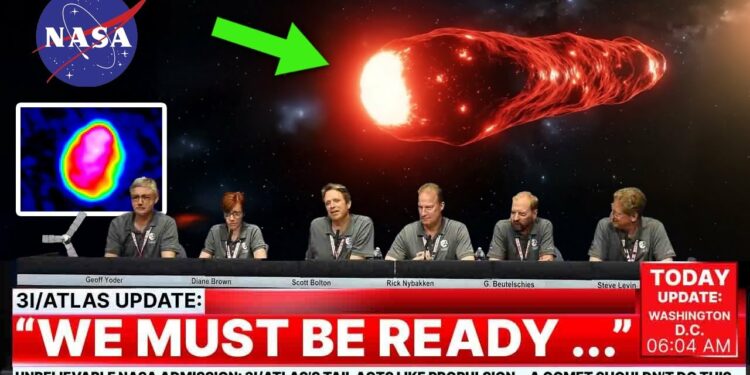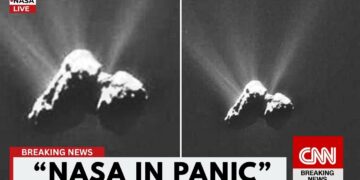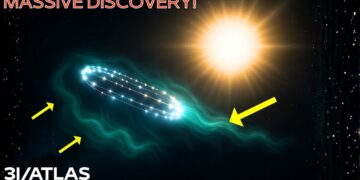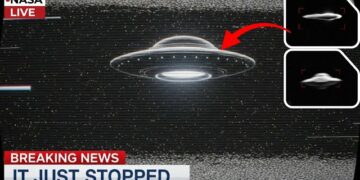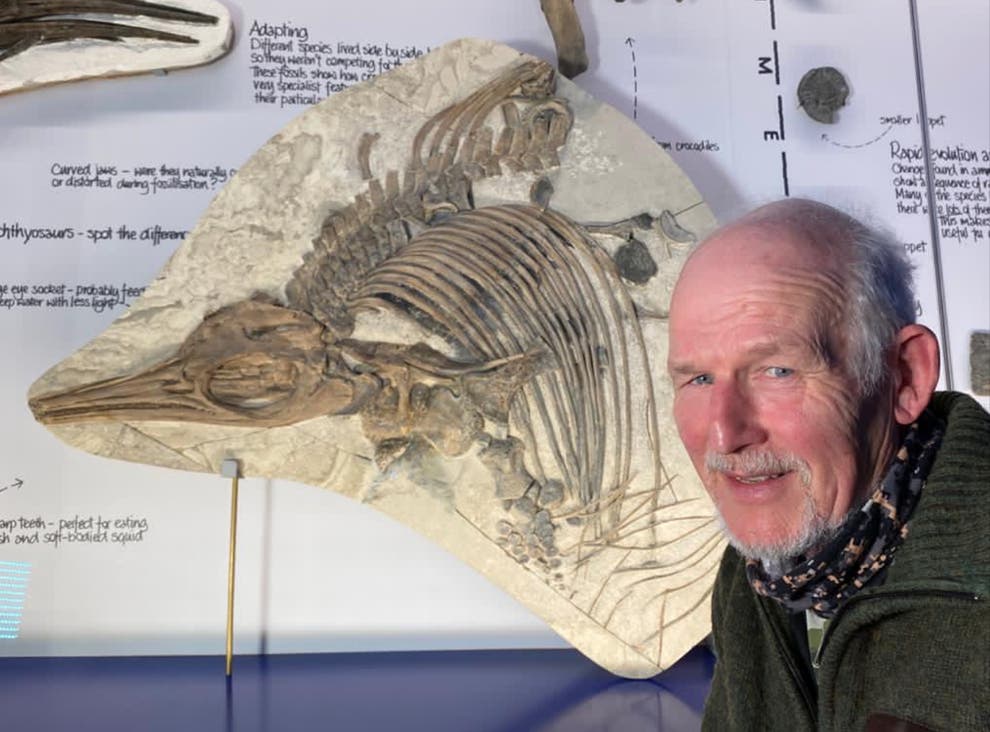What if an interstellar object speeding through our solar system is not a natural phenomenon but a nuclear-powered spacecraft sent by an alien civilization to observe humanity’s response? As the object approaches, data improves, revealing what scientists call non-gravitational acceleration—a clue that could point to a propulsion system or engine. Designated 3I Atlas, this object is roughly the size of Manhattan Island and follows an extraordinary trajectory, visiting Mars, Earth, Venus, and Jupiter in a path that resembles a meticulously planned tour. Harvard professor Avi Loeb, after analyzing the data, suggests this could be humanity’s first confirmed encounter with an alien spacecraft. The critical question is: Are these visitors here to study us peacefully, or have we caught the attention of something far more dangerous?
3I Atlas, traveling at over 130,000 miles per hour, is moving so fast it could travel from New York to Los Angeles in just over a minute. Its speed alone is astonishing, but its origins and characteristics are even more perplexing. NASA confirmed within 24 hours of its discovery that 3I Atlas hails from beyond our solar system, traversing the vast void between stars—a region no human spacecraft has ever reached. Its velocity is so great that the sun’s gravity cannot hold it in orbit, meaning it will eventually exit our solar system unless it deliberately slows down. Measuring 6 to 9 miles across, 3I Atlas is comparable to Manhattan Island, far larger than typical interstellar visitors like comets or asteroids. This immense size and speed challenge our understanding of natural space objects.
Professor Loeb’s analysis suggests 3I Atlas may not be a natural object but an artificial construct from an extraterrestrial civilization. Its trajectory is too precise, its size too unprecedented, and its timing too convenient, coinciding with humanity’s ability to detect such objects. Loeb proposes it might be a reconnaissance probe designed to study our solar system’s planets while avoiding close scrutiny. Its path takes it past Mars on October 2 at 171.5 million miles, Earth on December 19 at 167 million miles, Venus at 60 million miles, and Jupiter at 33 million miles—a sequence so efficient it seems deliberately planned. The odds of such a trajectory occurring naturally are less than 0.005%, suggesting either an extraordinary cosmic coincidence or intentional design.
The object’s size and speed further defy natural explanations. Compared to ‘Oumuamua, a football-field-sized interstellar object detected eight years ago, 3I Atlas is hundreds of times larger. ‘Oumuamua exhibited unexplained acceleration and lacked a comet’s typical tail, hinting at artificial origins. Similarly, 3I Atlas’s velocity—over three times faster than humanity’s fastest spacecraft, Voyager 1 at 38,000 mph—requires forces rarely seen in nature. Its perfect trajectory and timing raise the possibility that it could slow down using advanced propulsion to enter a stable orbit, perhaps near Jupiter, for long-term observation of humanity.
This leads to the chilling “dark forest hypothesis,” which likens the universe to a dark forest where civilizations remain silent to avoid detection by potentially hostile advanced species. If 3I Atlas is a spacecraft, its creators likely possess technology far beyond ours, possibly including weapons capable of threatening entire planets. Its journey, beginning around 8,000 years ago when humans developed agriculture and writing, suggests it may have been triggered by our civilization’s early advancements. This raises the possibility that humanity’s technological progress has already been noticed by distant observers.
However, not all scientists agree with Loeb’s extraterrestrial hypothesis. High-resolution images of 3I Atlas show a faint glow resembling a comet’s tail, suggesting it may be a natural object—a massive chunk of ice and rock heated by the sun. Its brightness, consistent with reflective ice crystals, supports this view. Critics also question why an alien probe would approach no closer than 167 million miles to Earth, an inefficient distance for detailed observation. Alternative theories propose 3I Atlas could be a fragment of a larger body, broken apart by a collision or gravitational forces in its distant past.
Regardless of its origins, 3I Atlas is a scientific milestone. As only the third confirmed interstellar object, following ‘Oumuamua and 2I/Borisov, it offers a rare opportunity to study material from another star system. Its size and trajectory provide extended observation windows, and its arrival has spurred unprecedented global cooperation among astronomers. The lessons from ‘Oumuamua, which was too distant for detailed study by the time it was identified, have prompted ambitious projects like Project Lyra and the European Space Agency’s Comet Interceptor. These aim to intercept future interstellar visitors, using gravitational slingshots or strategic positioning at Lagrange Point L2 to study objects like 3I Atlas up close.
Whether a natural phenomenon or an alien craft, 3I Atlas represents a turning point in human history, pushing us to refine our technology and deepen our understanding of the cosmos. Its mysteries challenge our assumptions and fuel the race to uncover whether we are alone—or being watched.

